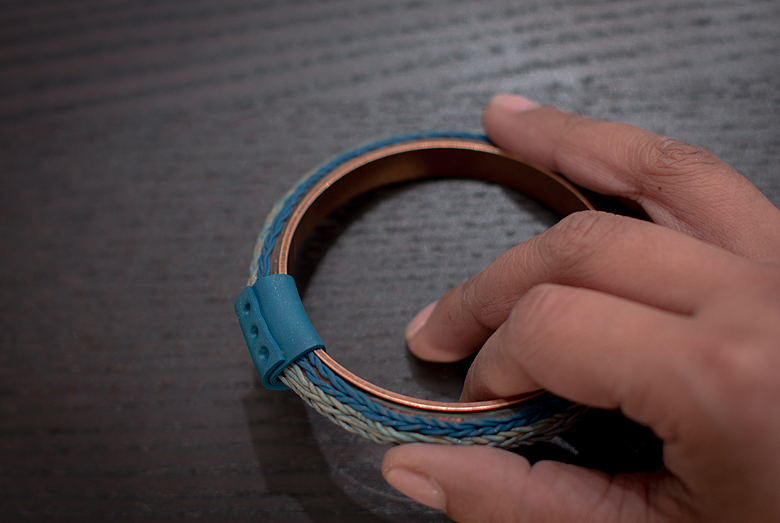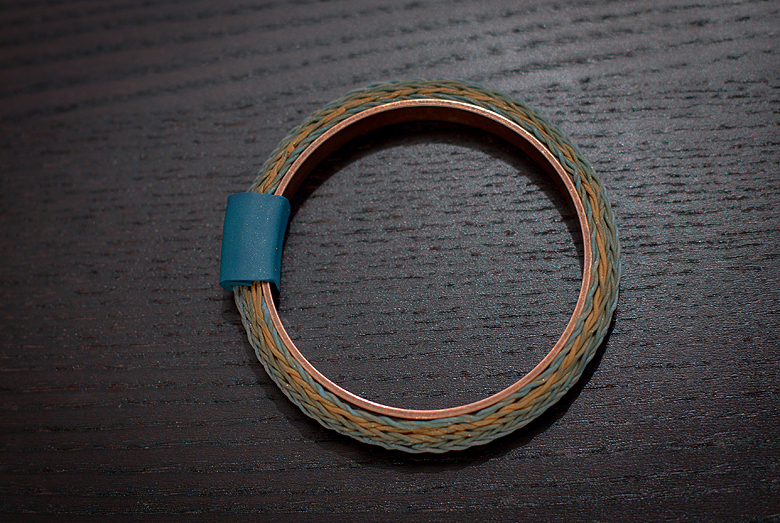
I’m still taking my shaky steps in polymer clay. Sometimes I like it, sometimes I loathe it, but I always learn something. I was talking to some artist friends about being a process vs product artist. I vary; when it comes to knitting for example, I’m both. I want a product at the end of it, but I enjoy the process of knitting enough for a project to take forever, and for that to be ok.
Polymer clay on the other hand… I try and I try to be process oriented. To enjoy playing with the clay and learning new techniques. However, I’ve got to fess up. If I’m going to spend a night setting up my clay workspace and spending hours with sticky hands, well, I want something to show for it. Last night I had an idea, and spent the evening giving it a shot. I’m not 100% thrilled with the final product, but I did learn a lot and I photographed every step, so for anyone who wants to give something similar a try, here they are.
For my own work – I see potential in the technique, now it’s just practice.
Step 1 – Get some channel bangles. I got mine from artbeads.com

Step 2 – I got some old, muddy-coloured clay and ran it through my extruder with the triangular shaped hole. I ran enough to cover the bracelet twice over.
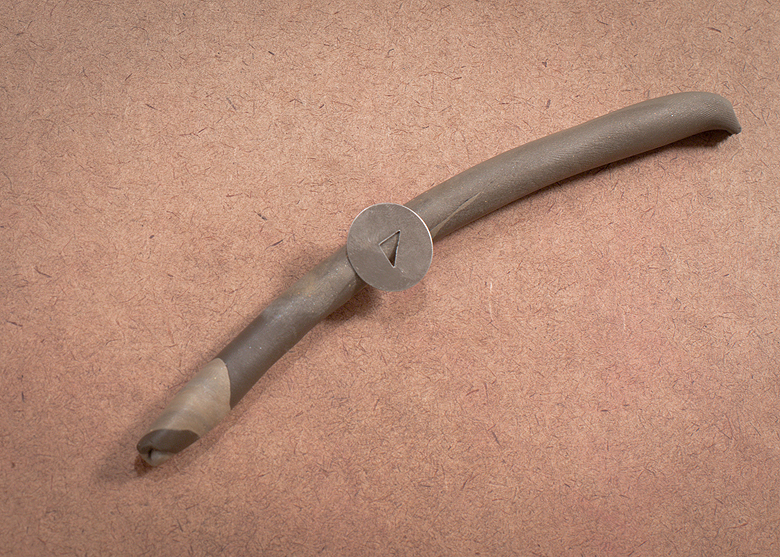
Step 3- I covered the bangle with the first round of the extruded clay. I put my hand through the bangle, and applying a very light pressure, rolled the bangle along my board to flatten out the first layer and make sure it fills the channel completely.
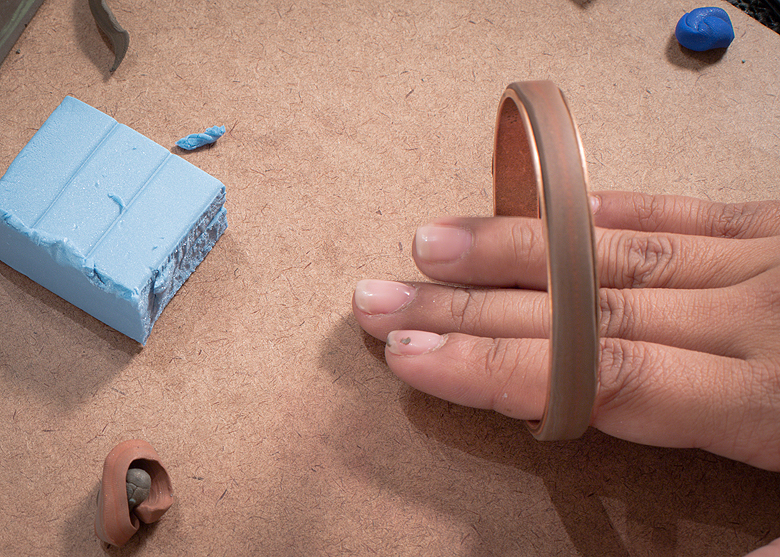
Step 4 – I took the second half of my extruded clay and carefully applied it on top of my first layer. This layer I did not flatten, I just smoothed it over with my fingers to make sure it was joined.
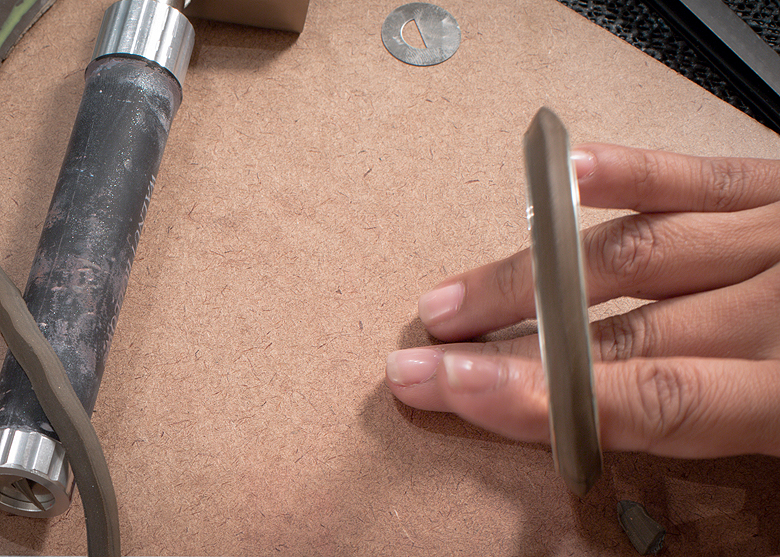
Step 5 – I took a flat tool and ran it along the edges, to make sure no clay was overlaying the edge of the channel, and also to seal the join between layers 1 and 2.
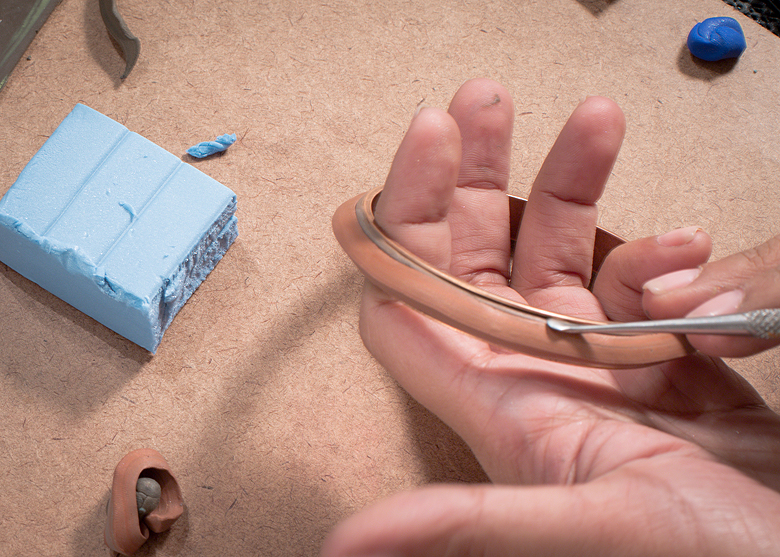
Step 6 – I created this colour array to fit into my extruder. This time I used the smallest possible circle.

Step 7 – I didn’t extrude all of it at once, just gave myself a yard or so to work with.
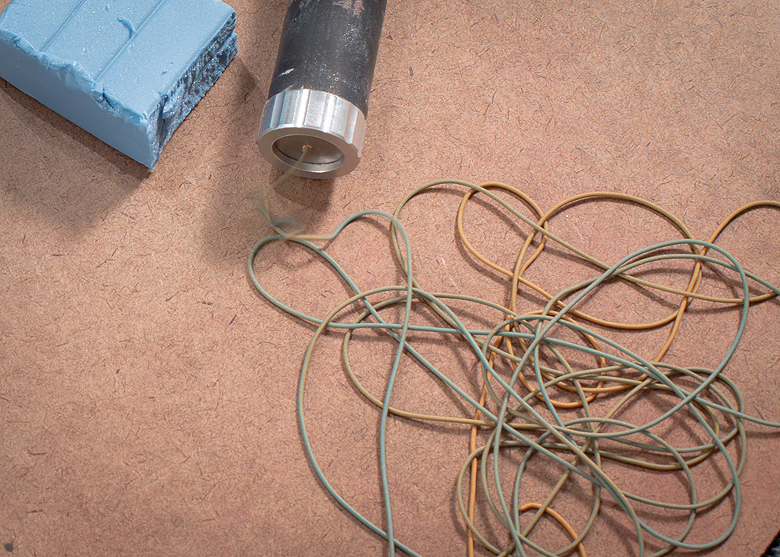
Step 8 – I took a length that was about 1.5 times the circumference of the bangle, and doubled it.
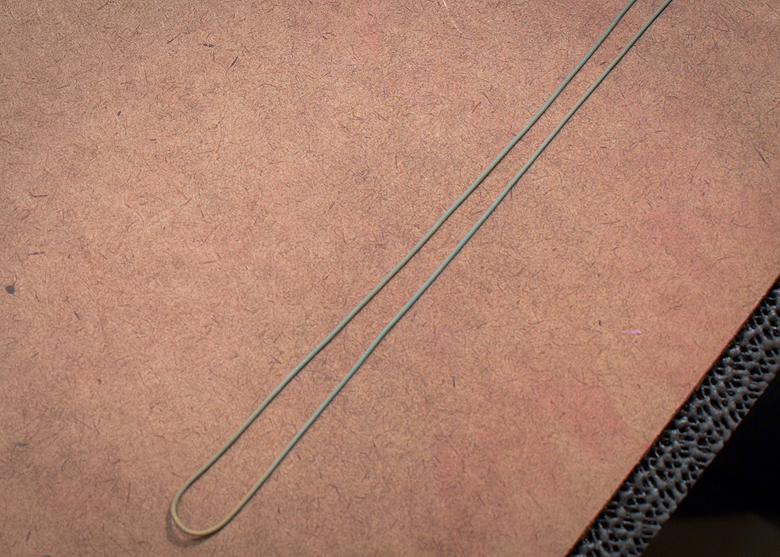
Step 9 – I twisted it, clockwise. I’m just a rookie at this, but I did my best to make sure the twist was evenly distributed.
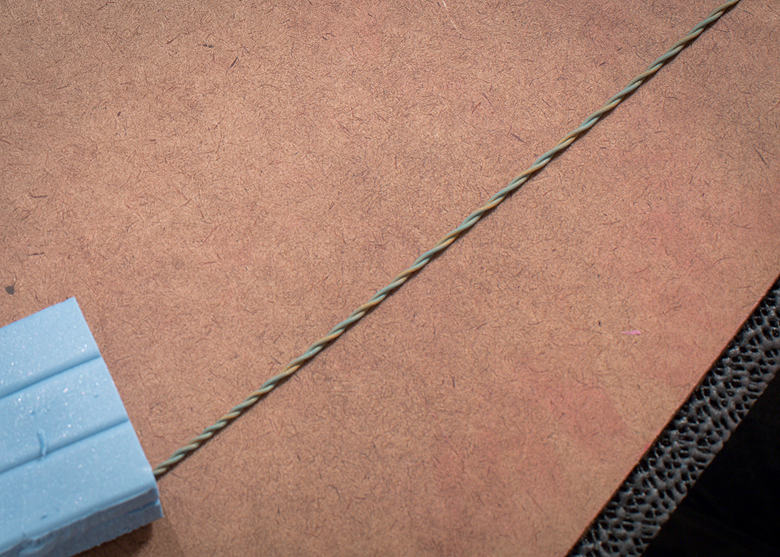
Step 10 – I carefully wrapped this twist around my bangle. I made another twist, but my second one was twisted counter-clockwise. I added this twist to the bracelet as well. I kept building it up in this way, slowly covering all the brown clay with ‘faux knitting’ by alternating clockwise and counter-clockwise twisted ropes of clay. I made sure that all my strands started and ended in the same spot so I could keep the messy looking part of the bangle localized.
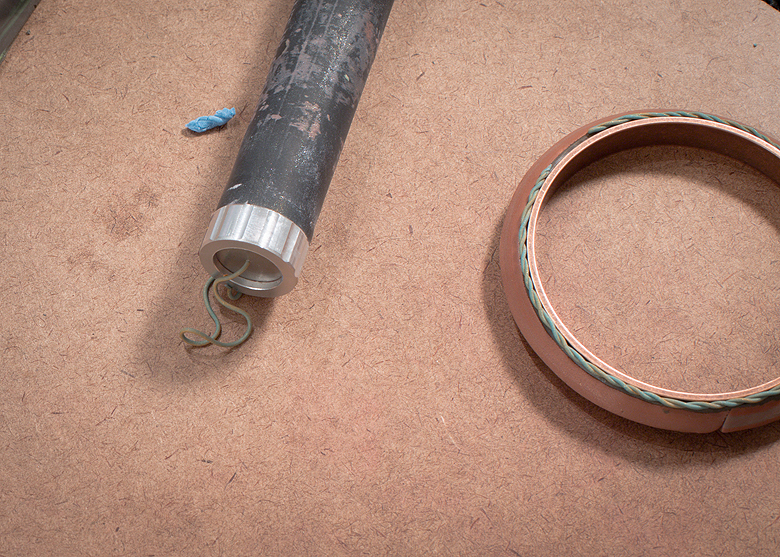
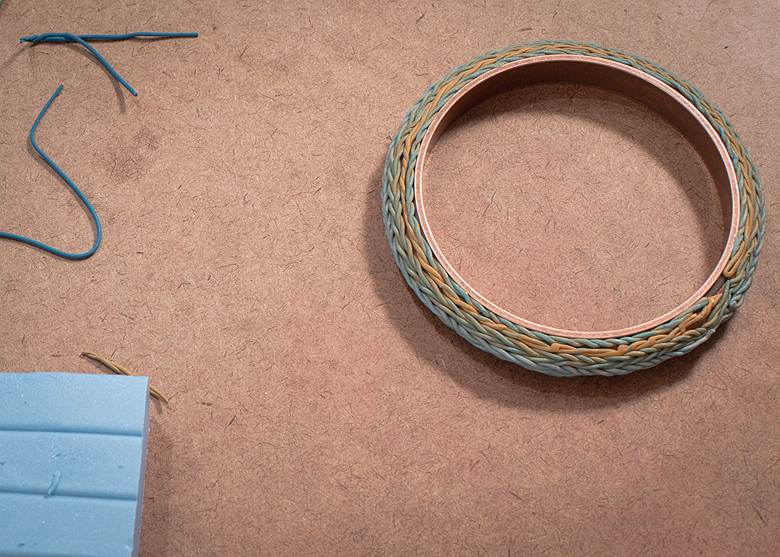
Step 11 – When it was totally covered I wrapped a piece of clay around the area where the joins were. I covered up the joins and then used a small ball-head tool to push in 3 dents to seal that connection.
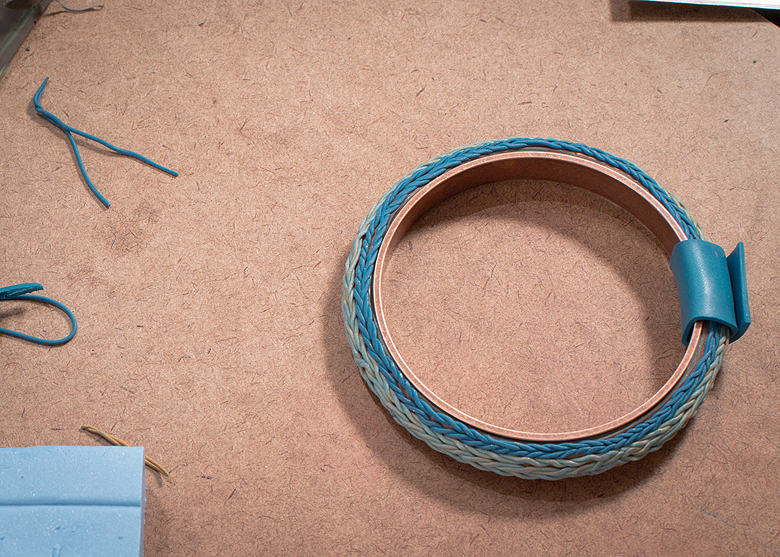
And that’s it! Other than baking of course – there’s my first go at turning a thin channel bangle into a 3 dimensional knitted bangle. It’s definitely got potential, and I’ll be making more!
